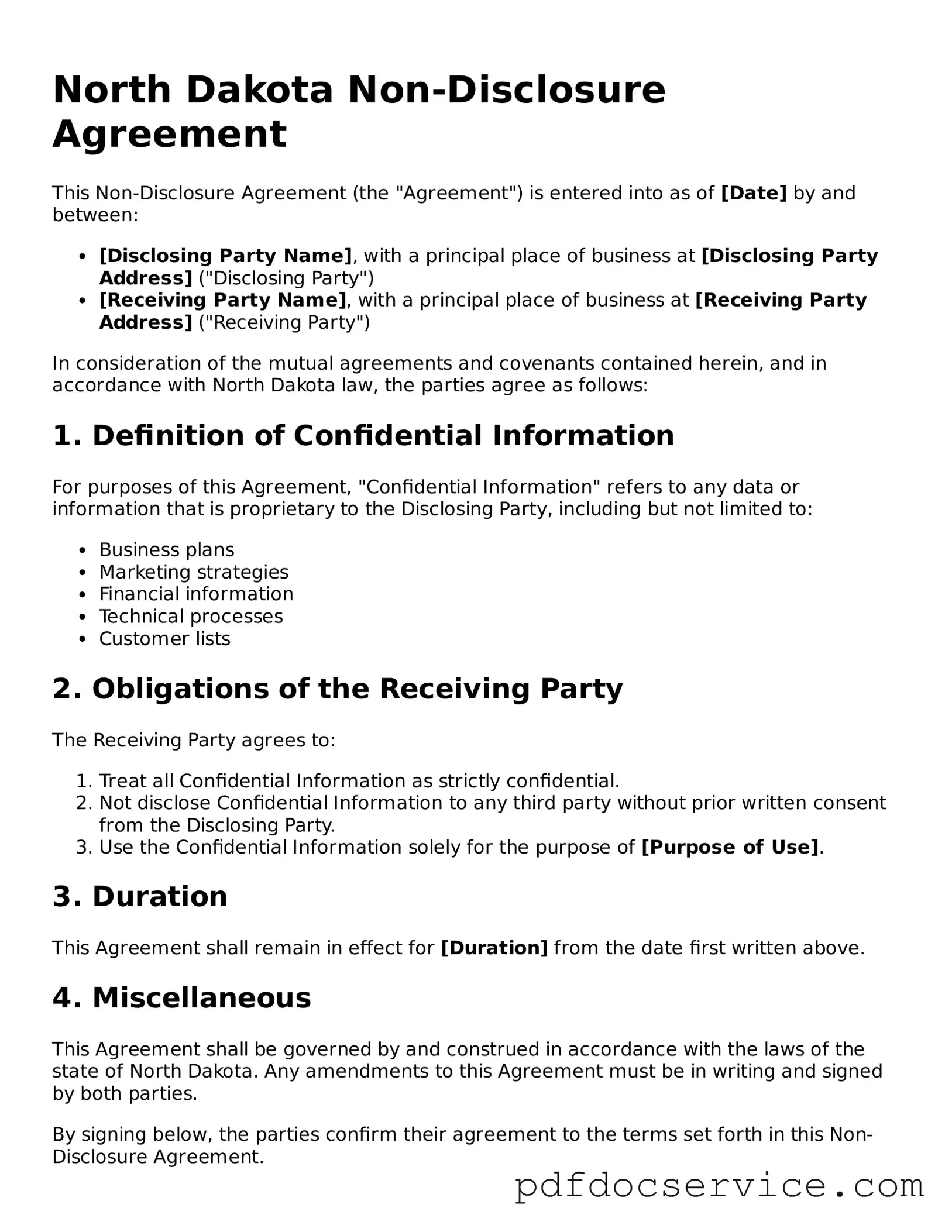What is a Non-disclosure Agreement (NDA)?
A Non-disclosure Agreement (NDA) is a legal contract that establishes a confidential relationship between parties. It protects sensitive information from being disclosed to unauthorized individuals or entities. NDAs are commonly used in business settings to safeguard trade secrets, proprietary information, and other confidential data.
Who should use a Non-disclosure Agreement in North Dakota?
Any individual or business that wishes to protect sensitive information can use an NDA. This includes entrepreneurs, startups, established businesses, and independent contractors. If you plan to share confidential information with another party, having an NDA in place is advisable.
An NDA can protect various types of information, including but not limited to:
-
Trade secrets
-
Business plans
-
Financial data
-
Customer lists
-
Product designs
-
Marketing strategies
Essentially, any information that provides a competitive advantage and is not publicly known can be covered under an NDA.
How long does an NDA last?
The duration of an NDA can vary based on the agreement between the parties. Generally, NDAs specify a time frame during which the information must remain confidential. This period can range from a few years to indefinitely, depending on the nature of the information being protected.
What happens if someone breaches the NDA?
If a party breaches the NDA, the affected party may seek legal remedies. These remedies can include:
-
Injunctions to prevent further disclosure
-
Monetary damages for losses incurred
-
Legal fees and costs associated with enforcement
It is essential to clearly outline the consequences of a breach in the NDA to deter violations.
Can an NDA be modified after it is signed?
Yes, an NDA can be modified if both parties agree to the changes. It is important to document any modifications in writing, ensuring both parties sign the revised agreement. This helps maintain clarity and enforceability of the terms.
Is a Non-disclosure Agreement enforceable in North Dakota?
Yes, NDAs are generally enforceable in North Dakota, provided they meet certain legal requirements. The agreement must be clear, reasonable in scope, and not violate public policy. It is advisable to consult with a legal professional to ensure the NDA is properly drafted and enforceable.
NDAs can be obtained from various sources, including legal websites, law firms, and business organizations. It is important to choose a form that is tailored to North Dakota laws and the specific needs of the parties involved. Customizing the agreement with the help of a legal professional is often recommended.
